Journaling Apps for the iPad
Day One is the rare app that lives up to its hype. The award-winning app’s simplicity and elegance has made it the standard to which all other journal apps are compared. Day One’s best feature may be that it’s so easy and pleasant to use that you actually want to use it. The app has negligible load time, a clean interface, and nearly every feature you would want, such as: the ability to create multiple entries on the same day, style and font choices, optional passcodes and reminders, auto-addition of location and weather data, photos, tags, searching, and exporting all or some entries to PDF. In fact, the developers of Day One add features so often that it’s quite possible that the few features currently lacking (e.g., multiple journals and connections to social networks) will be added by the time you read this. Day One also sets itself apart with its effortless syncing via iCloud that works nearly error-free between iOS devices and the companion Mac app.

Day One (Journal / Diary)
Day One is the rare app that lives up to its hype. The award-winning app’s simplicity and elegance has made it the standard to which all other journal apps are compared. Day One’s best feature may be that it’s so easy and pleasant to use that you actually want to use it. The app has negligible load time, a clean interface, and nearly every feature you would want, such as: the ability to create multiple entries on the same day, style and font choices, optional passcodes and reminders, auto-addition of location and weather data, photos, tags, searching, and exporting all or some entries to PDF. In fact, the developers of Day One add features so often that it’s quite possible that the few features currently lacking (e.g., multiple journals and connections to social networks) will be added by the time you read this. Day One also sets itself apart with its effortless syncing via iCloud that works nearly error-free between iOS devices and the companion Mac app.

Everyday Timeline: Personal Journal/Diary with Calendar/Maps/Evernote/Dropbox
Even though it lacks the polish of Day One, Everyday Timeline is a great free option with some features that might make it worth using in addition to some of the other more prestigious apps on this list. Specifically, Everyday Timeline can automatically import your data— including past data— from Facebook, Twitter, Instagram, and Foursquare as separate entries on your timeline. As the name suggests, Everyday Timeline displays your entries on a chronological feed that is sorted by date and time. The app supports tags, multiple entries each day, as well as adding photos, location information, and your mood to entries. Everyday Timeline has virtually no learning curve, gives you statistics about your postings, and can be configured to backup weekly to Dropbox, Evernote, or email, add a passcode lock, reminders, and offer you a daily question. It’s important to note that Everyday Timeline requires users to create an account before using the app, which means that your entries are synced to their website and accessible via any web browser, but all entries are private by default.

Chronicle - Journal and Writing Notebooks
Chronicle is the successor to the still-popular Chronicle for iPad, and in many ways it has already eclipsed its predecessor. Specifically, Chronicle is a universal app that syncs via iCloud and can be linked to Dropbox to automatically back up each day. The app also supports multiple journals, multiple entries for a given day, Markdown formatting, search, a passcode, reminders, and an extended keyboard. The interface is simple but somehow still a bit confusing to navigate quickly. Aside from some iCloud-related hiccups the developer is investigating, Chronicle’s one clear lack is the ability to export all of your entries as a text file or PDF.

OnePAD Pocket Notebook
For simplicity, you can’t do better than OnePAD. The app eschews files, folders, and interfaces to put the focus on the writing. To that end, OnePAD opens quickly to the page with today’s date, so that you can start capturing your thoughts, notes, and diary entries. The app syncs via iCloud, can export your entire journal as a text file, and supports searching and editing notes.
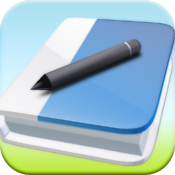
myMemoir
At first glance, My Memoir doesn’t seem impressive enough to challenge the top apps, but it has one killer feature that sets it apart: the ability to export journals as ePub, PDF, or Text files. This flexible export function means that anything you write in MyMemoir should be readable by you and others years later, and importable into another application should the developers abandon MyMemoir. MyMemoir’s spartan interface and lack of full retina optimization, however, may render it unpalatable to those accustomed to more stylish iOS apps. In terms of features, MyMemoir supports multiple journals, adding video files and three photos to each entry, and the ability to buy additional themes as in-app purchases.
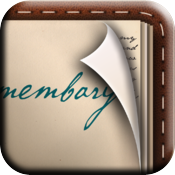
Remembary Connected Diary
Remembary was clearly designed with social media power users in mind. The app can automatically import all sorts of content as part of your daily entries, including tweets, Facebook updates, images from your camera roll and photo stream, iCal events, and up to five RSS feeds directly. However, instead of adding the data directly into your daily entry, it is placed on a clickable icon on the side. This makes it difficult to see the data when flipping through entries. Remembary also nods to the past with its skeuomorphic design and font, which some may like and others may hate. The app has multiple export options, including formatting entries as data or text, and whether to export to iPad, email, or Dropbox. Remembary does have some notable flaws: it doesn’t support automatic syncing between iPhone and iPads or adding photos to entries manually.

Moleskine Journal
Moleskine has been a premiere maker of high end physical journals and notebooks for many years, and their app is a promising start to their digital expansion. The app is only partially successful in translating the analog experience to the digital, but the failure is mostly in execution rather than design. The app is slow, prone to crashing, and has some odd flaws, such as the fact that the text isn’t properly aligned to the lines on the paper and the exclusive use of gestures for navigation. Moleskine does have some great features that set it apart from other apps; specifically, the app supports handwriting as well as text entry, has paintbrush, highlighting, and color options, and allows users to create multiple notebooks with different “paper styles” or templates such as storyboards, weekly planners, and recipes. If the execution problems are corrected, Moleskine could easily become a top app in this category.

MacJournal for iPad
MacJournal is one of the most popular and oldest journaling apps for Mac, but the iPad version is somewhat lacking in comparison with the others in the list. The app’s interface is clean and polished, and it has most of the essential journaling features and can even send your entries to a blog. However, MacJournal has been known to have numerous syncing issues, especially when you make the considerable investment and purchase the iPad, iPhone, and Mac apps.

My Wonderful Days : Daily Journal/Diary
My Wonderful Days is an attractive app that has many great features, including iCloud sync, PDF export, reminders, and a mood rating system. However, these features are implemented oddly, and somehow combine to make the app less usable than that list of features would suggest. The interface is clean but not intuitive enough, so it’s possible to get frustrated using it.

Quiller
Quiller incorporates the rich features of the best digital journals without compromising its skeuomorphic design. The app displays your journals as books on a wooden shelf, and the pages of the journal aren’t white or lined— they have slightly dimmed flowers! Quiller also sets itself apart in its inclusion of prompts and quotes (some of which are submitted by users) to jumpstart your entries. It supports search, exporting as text or PDF, adding photos and tags to entries, and can show you statistics about your journal and writing habits. To be truly excellent, Quiller needs to add links to one or more cloud services, preferably with syncing, and make it much harder to accidentally delete notes or whole journals.

The Dream Log — A Diary For Dreaming
The Dream Log is very stylized, so much so that people are likely to love it or hate it nearly immediately. The app has a Steampunk-style design, and uses colored themes that even tint the keyboard. Although The Dream Log looks quite beautiful, its design may not make it something you want to incorporate into your daily workflow. In terms of utility, The Dream Log can export to a website, back up your journal, search the Internet from within the app (to interpret your dreams), and has a robust passcode and alarm system. The Dream Log seems more concerned with creating an atmosphere than specific features, and it succeeds.

My Daily Journal

iJournal - iPad notebook and journal

Private Journal
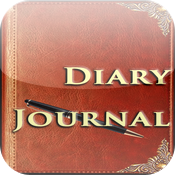
Diary Journal - Easy & Best Voice Record Meeting Notes Vault Private Events Own Picture Background & Social Buzz

iDiary Pro - Journal mt

Memory Book - Diary & Journal

My Secret Diary

Pebble Journal

Dailybook (Journal / Diary)
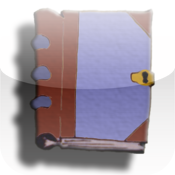
Pad Journal
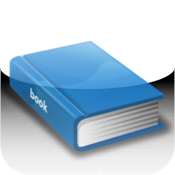
iDo Notepad (Diary/Journal)
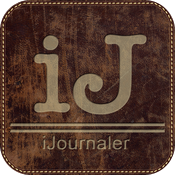
iJournaler - Your Diary to Journal on iPad

Diary for iPad

Windbell Diary HD

SquareDiary HD

My Own Diary HD (Journal/Diary)

Capture 365 Journal

Tablet Journal™
